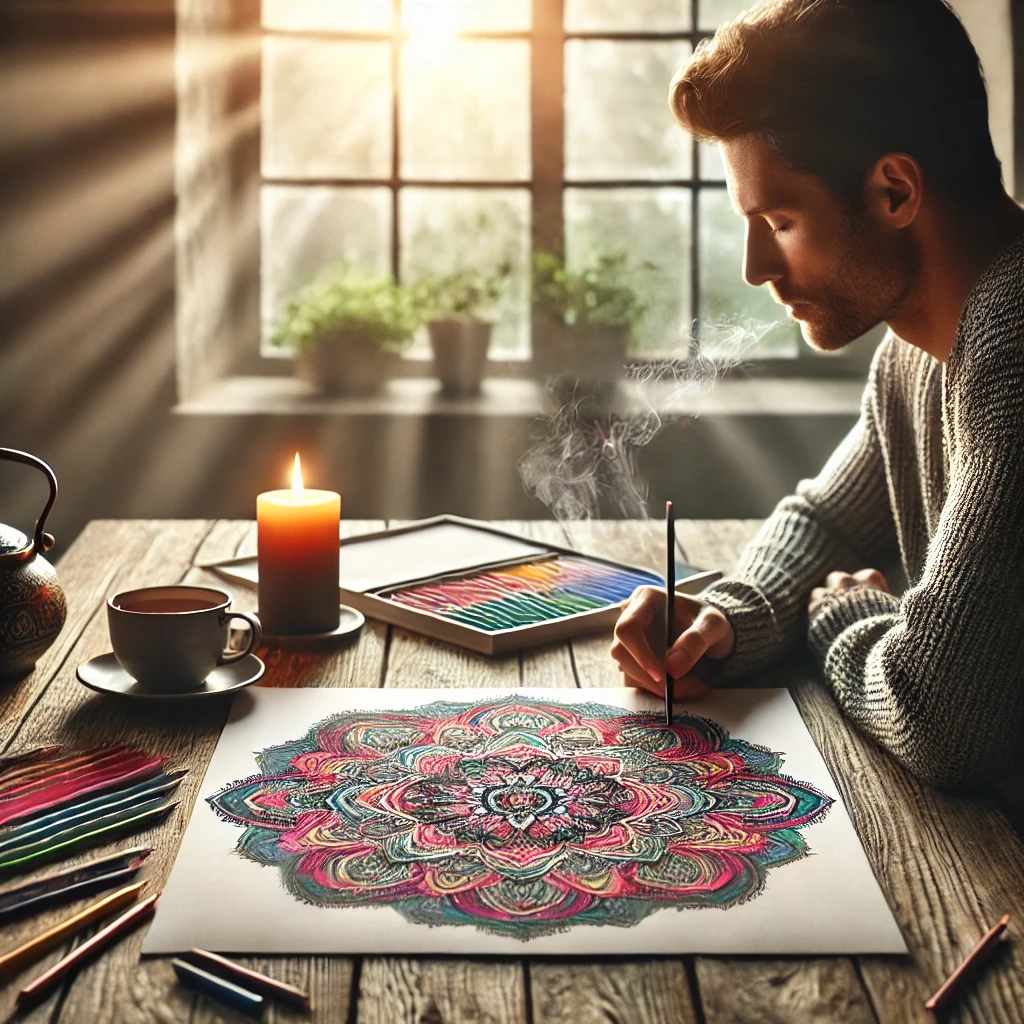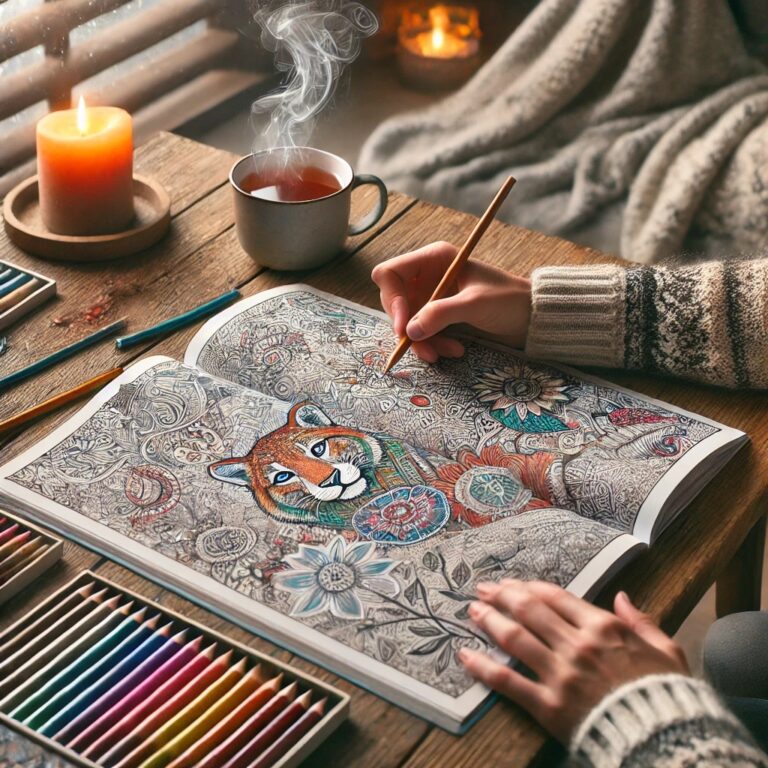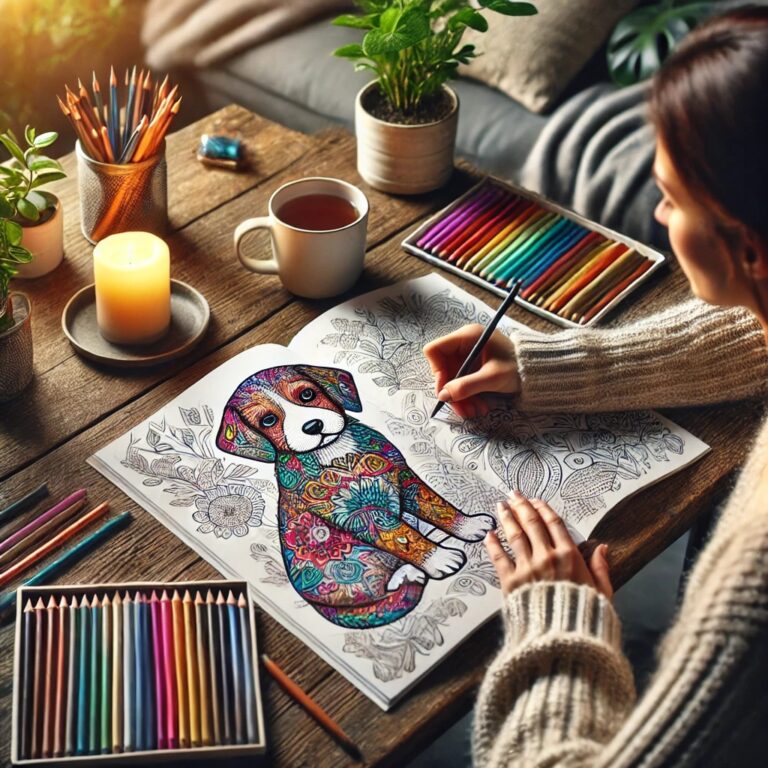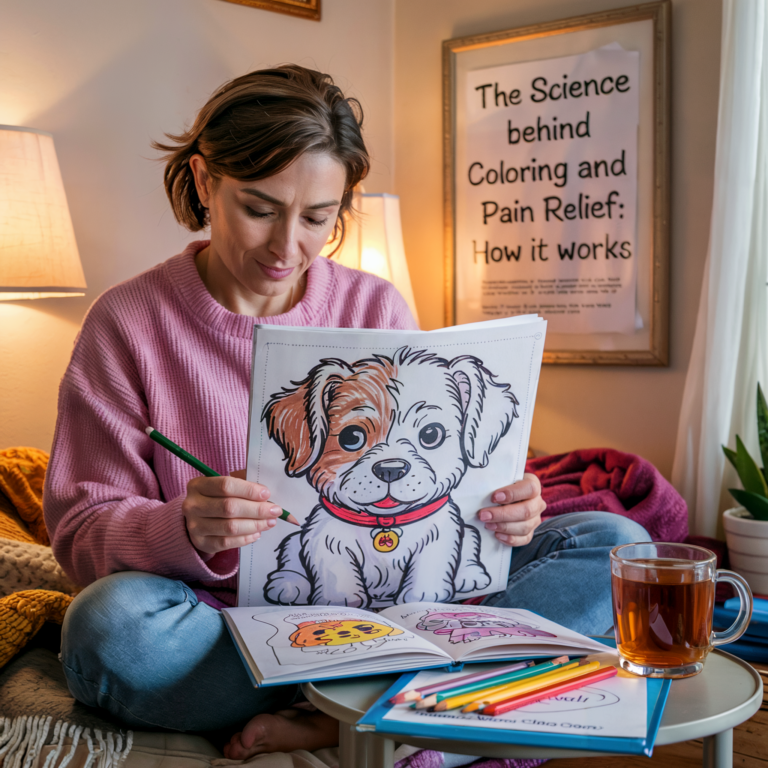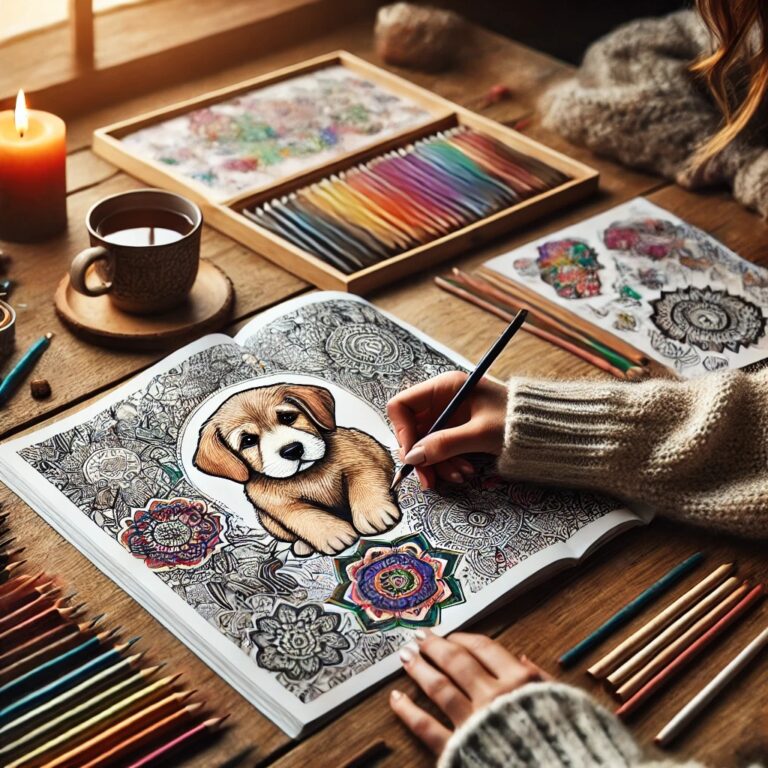Anxiety can feel overwhelming. Racing thoughts, stress, and constant worry make it challenging to find peace. But what if the simple act of coloring could bring relief? Many people are turning to adult coloring for mindfulness and stress reduction. This creative practice calms the mind, eases anxiety, and promotes relaxation. At MaxwellPawsworth.com, we explore how coloring can help you regain control and find peace in the present moment.
The Science Behind Coloring and Anxiety Relief
Coloring isn’t just an enjoyable hobby. Research shows that it has measurable benefits for mental health. Engaging in structured creativity helps lower stress levels and shift focus away from anxious thoughts.
How Coloring Affects the Brain
- Reduces Amygdala Activity – The amygdala processes fear and anxiety. Coloring lowers its activity, creating a sense of calm.
- Activates the Prefrontal Cortex – This brain area controls problem-solving and focus. Engaging it through coloring improves concentration and emotional balance.
- Induces a Meditative State – Repetitive motions and focused attention mimic the effects of meditation, helping the brain relax.
Why Coloring is a Powerful Mindfulness Tool
Mindfulness is the practice of being fully present. It involves focusing on the now rather than worrying about the past or future. Coloring naturally encourages mindfulness by demanding your full attention.
1. Encourages Present-Moment Awareness
When you color, your mind focuses on patterns, shapes, and colors. This immersion shifts attention away from stress and creates a meditative experience.
2. Provides a Break from Overthinking
Anxiety often involves excessive worrying. Coloring offers a structured, calming distraction that interrupts this cycle.
3. Reduces Negative Thoughts
Engaging in a creative task shifts brain activity, reducing negative thinking patterns. Coloring can replace anxious thoughts with feelings of relaxation and achievement.
How Coloring Compares to Traditional Anxiety Treatments
Therapy, medication, and mindfulness exercises are common treatments for anxiety. Coloring isn’t a replacement, but it complements these methods in a unique way.
Benefits of Coloring Compared to Other Methods
- Easier than Meditation – Meditation can be challenging for those with restless minds. Coloring provides similar benefits without requiring complete stillness.
- More Accessible Than Therapy – Therapy is valuable but not always available. Coloring offers an immediate, self-guided way to manage stress.
- No Side Effects – Unlike medication, coloring has no risks. It’s a safe, effective way to ease anxiety naturally.
Practical Ways to Use Coloring for Anxiety Relief
To experience the full benefits of coloring, incorporate it into your daily routine. Here’s how:
1. Choose the Right Coloring Book
Pick a book that inspires you. At MaxwellPawsworth.com, we offer books with calming themes, from nature scenes to intricate mandalas.
2. Set Aside Dedicated Time
Schedule 15-30 minutes a day for coloring. Use this time to unplug, relax, and focus on creativity.
3. Create a Peaceful Environment
Find a quiet space. Play soft music or light a candle to enhance the calming effects.
4. Use Colors to Influence Mood
- Blues and Greens – Promote relaxation and peace.
- Yellows and Oranges – Boost energy and happiness.
- Purples and Pinks – Encourage creativity and emotional balance.
5. Pair Coloring with Deep Breathing
For added stress relief, take slow, deep breaths as you color. This further enhances relaxation and mindfulness.
Who Can Benefit from Coloring for Anxiety?
While anyone can enjoy coloring, certain groups may find it particularly beneficial:
People with High-Stress Jobs
Busy professionals often struggle with work-related anxiety. Coloring provides a quick and effective way to reset and recharge.
Students Facing Academic Pressure
Coloring helps students manage stress before exams and improves focus.
Individuals with Anxiety Disorders
For those with generalized anxiety, panic disorder, or social anxiety, coloring can be a soothing coping tool.
Caregivers and Parents
Caring for others is demanding. Coloring offers a moment of self-care in an often chaotic schedule.
Real-Life Stories: How Coloring Helps Manage Anxiety
Many people have discovered the calming power of coloring. Here are a few inspiring experiences:
- A teacher managing classroom stress – 20 minutes to color after school helped her unwind and feel more balanced.
- A retiree struggling with anxious thoughts – Coloring became a daily habit that improved focus and reduced worry.
- A college student facing exam pressure – Using coloring during study breaks helped relieve stress and improve concentration.
Why You Should Start Coloring Today
Anxiety doesn’t have to control your life. Coloring is a simple, accessible, and effective way to ease stress and practice mindfulness. It offers immediate relief, requires no special skills, and can be enjoyed anywhere.
Ready to discover the art of mindfulness through coloring? Explore our collection of adult coloring books at MaxwellPawsworth.com and start your journey to a calmer, more peaceful mind today.

